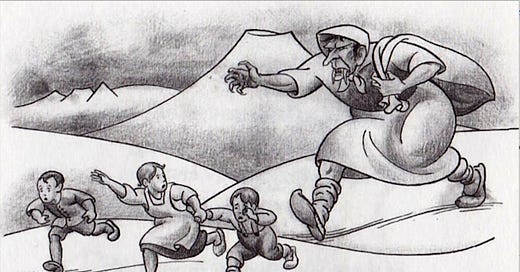Step Aside Krampus - Alternative Yuletime Villains for D&D.
From folklore & stories across the world!
Anyone who has been a dungeonmaster for at least 12 months has probably considered - or been asked - to run a Christmas one-shot game1.
The most common method for writing a christmas2 oneshot is that Krampus is doing dastardly things (like stealing Santa) and the party needs to go and stop him. It works, and Krampus forms an excellent villain, but it’s no …
Keep reading with a 7-day free trial
Subscribe to The Duckslayer Post to keep reading this post and get 7 days of free access to the full post archives.



